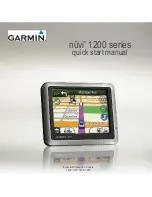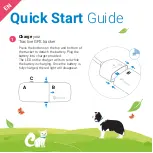
Waypoints
: Shows waypoints on the chart and opens the list of
waypoints.
Boundaries
: Shows boundaries on the chart and opens the list
of boundaries.
Tracks
: Shows tracks on the chart.
Other Vessels Layer Settings
NOTE:
These options require connected accessories, such as
an AIS receiver, radar, or VHF radio.
From a chart, select
MENU
>
Layers
>
Other Vessels
.
DSC
: Sets how DSC vessels and trails appear on the chart, and
shows the DSC list.
AIS
: Sets how AIS vessels and trails appear on the chart, and
shows the AIS list.
Details
: Shows other vessel details on the chart.
Projected Heading
: Sets the projected heading time for AIS-
activated and MARPA-tagged vessels.
AIS Alarm
: Sets the safe-zone collision alarm (
).
Water Layer Settings
From a chart, select
MENU
>
Layers
>
Water
.
Depth Shading
: Specifies an upper and lower depth to shade
between.
Shallow Shading
: Sets the shades from the shoreline to the
specified depth.
Spot Depths
: Turns on spot soundings and sets a dangerous
depth. Spot depths that are equal to or more shallow than the
dangerous depth are indicated by red text.
Fishing Contours
: Sets the zoom level for a detailed view of
bottom contours and depth soundings and simplifies map
presentation for optimal use while fishing.
Relief Shading
: Shows the gradient of the bottom with shading.
This feature is available only with some premium maps.
Sonar Imagery
: Shows sonar imagery to help show the density
of the bottom. This feature is available only with some
premium maps.
Lake Level
: Sets the present water level of the lake. This
feature is available only with some premium maps.
Depth Range Shading
You can set color ranges on your map to show the water depths
where your target fish are currently biting. You can set deeper
ranges to monitor how quickly the bottom depth changes within
a specific depth range. You can create up to ten depth ranges.
For inland fishing, a maximum of five depth ranges can help
reduce map clutter. The depth ranges apply to all charts and all
bodies of water.
Some Garmin LakeVü
™
and premium supplemental charts have
multiple depth range shading by default.
Red
From 0 to 1.5 m (from 0 to 5 ft.)
Orange
From 1.5 to 3 m (from 5 to 10 ft.)
Yellow
From 3 to 4.5 m (from 10 to 15 ft.)
Green
From 4.5 to 7.6 m (from 15 to 25 ft.)
Fish Eye 3D Settings
NOTE:
This feature is available with premium charts, in some
areas.
From the Fish Eye 3D chart view, select MENU.
View
: Sets the perspective of the 3D chart view.
Tracks
: Shows tracks.
Sonar Cone
: Shows a cone that indicates the area covered by
the transducer.
Fish Symbols
: Shows suspended targets.
Supported Maps
To help you have a safe and enjoyable time on the water,
Garmin devices only support official maps produced by Garmin
or an approved third party producer.
You can purchase maps from Garmin. If you purchase maps
from a seller other than Garmin, investigate the seller before
purchasing. Be extra cautious with online sellers. If you have
purchased an unsupported map, return it to the seller.
Garmin Quickdraw Contours Mapping
WARNING
The Garmin Quickdraw Contours mapping feature allows users
to generate maps. Garmin makes no representations about the
accuracy, reliability, completeness or timeliness of the maps
generated by third parties. Any use or reliance on the maps
generated by third parties is at your own risk.
The Garmin Quickdraw Contours mapping feature allows you to
instantly create maps with contours and depth labels for any
body of water.
When Garmin Quickdraw Contours records data, a colored
circle surrounds the vessel icon. This circle represents the
approximate area of the map that is scanned by each pass.
A green circle indicates good depth and GPS position, and a
speed under 16 km/h (10 mph). A yellow circle indicates good
depth and GPS position, and a speed between 16 and 32 km/h
(10 and 20 mph). A red circle indicates poor depth or GPS
position, and a speed above 32 km/h (20 mph).
You can view Garmin Quickdraw Contours in a combination
screen or as a single view on the map.
The amount of saved data depends on the size of your memory
card, your sonar source, and the speed of your boat as you
record data. You can record longer when you use a single-beam
sonar. It is estimated that you might be able to record about
1,500 hours of data onto a 2 GB memory card.
When you record data on a memory card in your chartplotter,
the new data is added to your existing Garmin Quickdraw
Contours map, and is saved on the memory card. When you
insert a new memory card, the existing data does not transfer
onto the new card.
10
Garmin Quickdraw Contours Mapping
Содержание Echomap Plus 40 series
Страница 1: ...ECHOMAP PLUS40 60 70 90SERIES Owner sManual...
Страница 6: ......
Страница 50: ...support garmin com TA 2018 183 TA 2018 209 TA 2018 154 April 2019 190 02242 00_0E...
















































